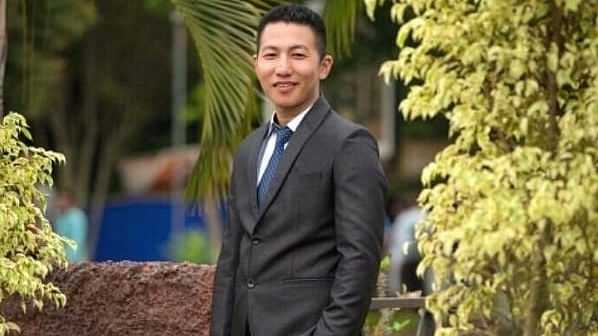New Delhi: Ruovilhoukho Chuzho of Nagaland’s Medziphema area has a success story that only a few have been able to script. Once a daily wager and earning about Rs 150 to Rs 200 every day, 29-year-old Chuzho today owns three enterprises – The Naga’s Feather, Collection Store and Chop Sticks.
Chuzho was forced to quit studies in 2005 after his mother passed away and the family fell into deep financial trouble. He took up the job of a daily wage labourer, like his father, to bring food to the table.
In 2012, he took a free vocational training in carpentry at the Industrial Training Institute in Kohima. “My uncle lived in Kohima and was kind enough to allow me to stay with him during my training. He gave me Rs 20 for the daily two-way commute to and from the institute,” Chuzho told The Better India.
He soon started a small venture of his own at Medziphema. A few years later, he received another free training in bamboo crafts from the Nagaland Bamboo Resource Centre and Chuzho went on to establish two more businesses in the years to come.
Also read: Museum in Nagaland village houses World War antiques, special beer vessel & an ancient grave
IIT-Guwahati prof designs backpacks with solar light
Charu Monga, a professor at the Indian Institute of Technology in Guwahati (IIT-G), has designed over 200 backpacks that are integrated with solar lights to help children in villages study during power cuts.
Called ‘Jugnu’, the bags are waterproof and made from recycled plastic. Monga came up with the idea when she learnt that children from the region faced difficulties due to an early sunset in the Northeast and infrequent power supply, especially in remote areas.
Each bag also comes with a unique lab kit that the children can use to come up with their own inventions. “More importantly, the children don’t have to worry about charging this light or forgetting it at school or at home,” Monga has been quoted as saying.
.@IITGuwahati professor Charu Monga has designed over 200 backpacks with solar lights to help kids in villages study. These waterproof backpacks are called Jugnu, & were made using recycled plastic. pic.twitter.com/yxQwHIEBHs
— Dr. Ramesh Pokhriyal Nishank (@DrRPNishank) January 8, 2021
Assam temple that remains underwater resurfaces
The Biswanath temple, situated on the banks of the Brahmaputra river in Assam’s Biswanath town, has resurfaced again, after remaining under water for nearly six months. The Shiva ‘linga’ that the temple houses goes under water during the monsoon every year.
Worship is conducted for the six months that the temple resurfaces through a temporary shed. Puja at the temple starts from the Assamese month of ‘Aghun’ and lasts until the month of ‘Bohag’.
Also known as ‘Gupta Kashi’ or ‘Pani Devalaya’, rituals in this unique temple have been held since the 16th century. Over the years, it has also become a tourist spot, attracting people from outside the state.
Lathon Kemp, among first women who wove Naga flag, dies
Lathon Kemp, who passed away on 5 January in Nagaland, was the member of a four-women team that wove the first Naga national flag. Featuring a rainbow and the Bethlehem Star, the flag was first hoisted on 22 March 1956 at Parashen in the state’s Rengma region.
The Naga flag has been regarded as a symbol of Naga nationalism. It is hoisted not just by separatist group National Socialist Council of Nagaland-Isak Muivah (NSCN-IM) but by various other Naga outfits.
While the NSCN-IM condoled her demise, the Rengma Students’ Union organised a short service for her in the state’s Tseminyu area by flying the Naga national flag at half-mast.
Also read: At a stall in Kohima, 3 youth aim to promote street food culture, local products






